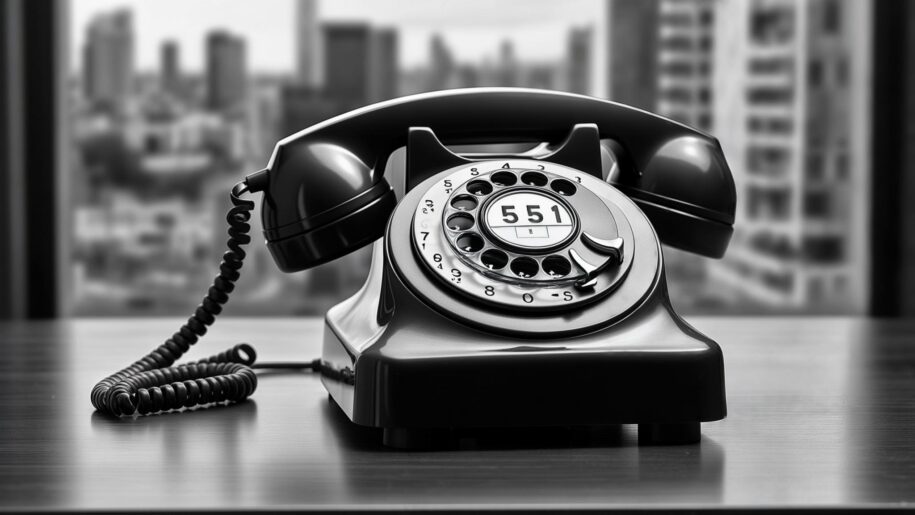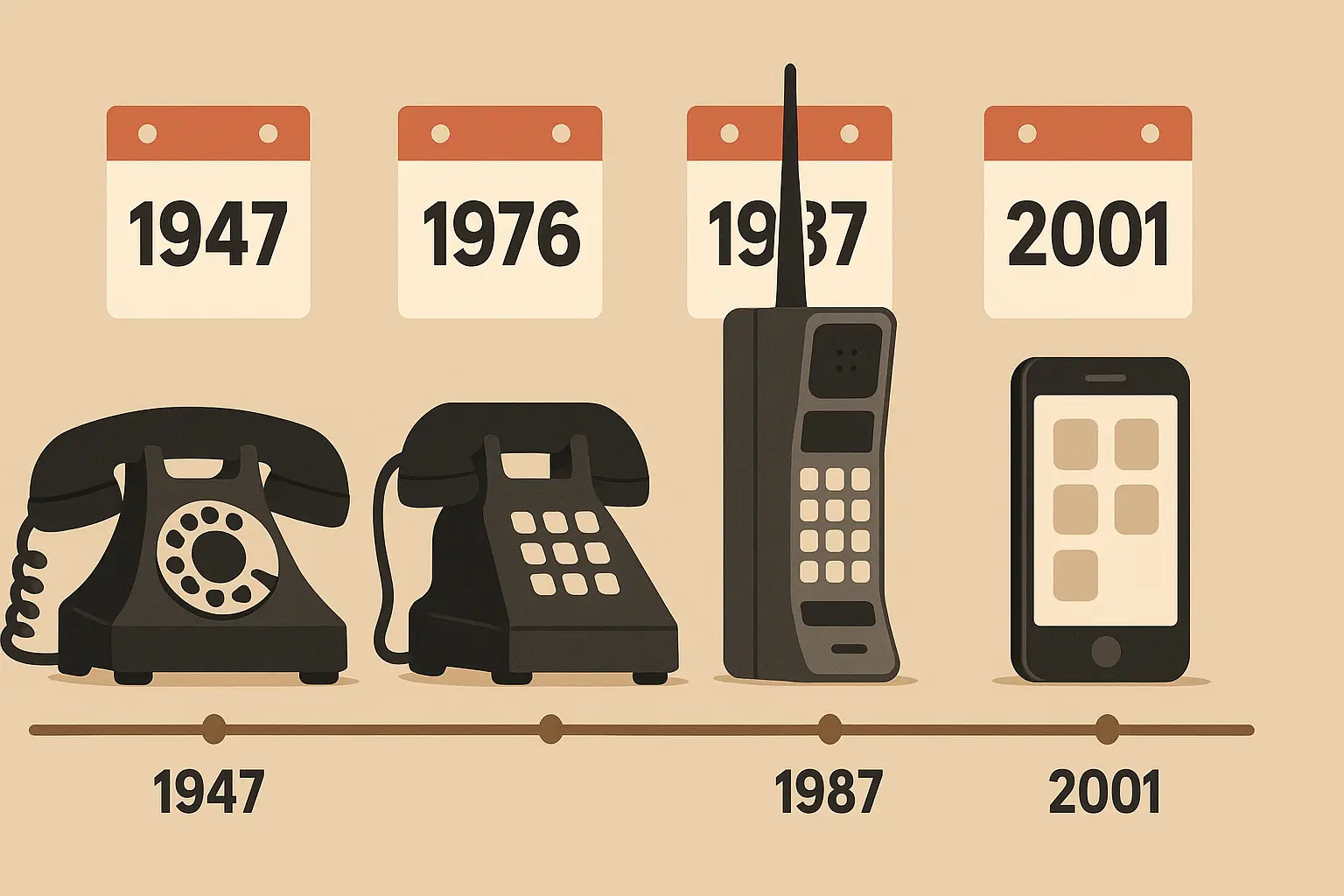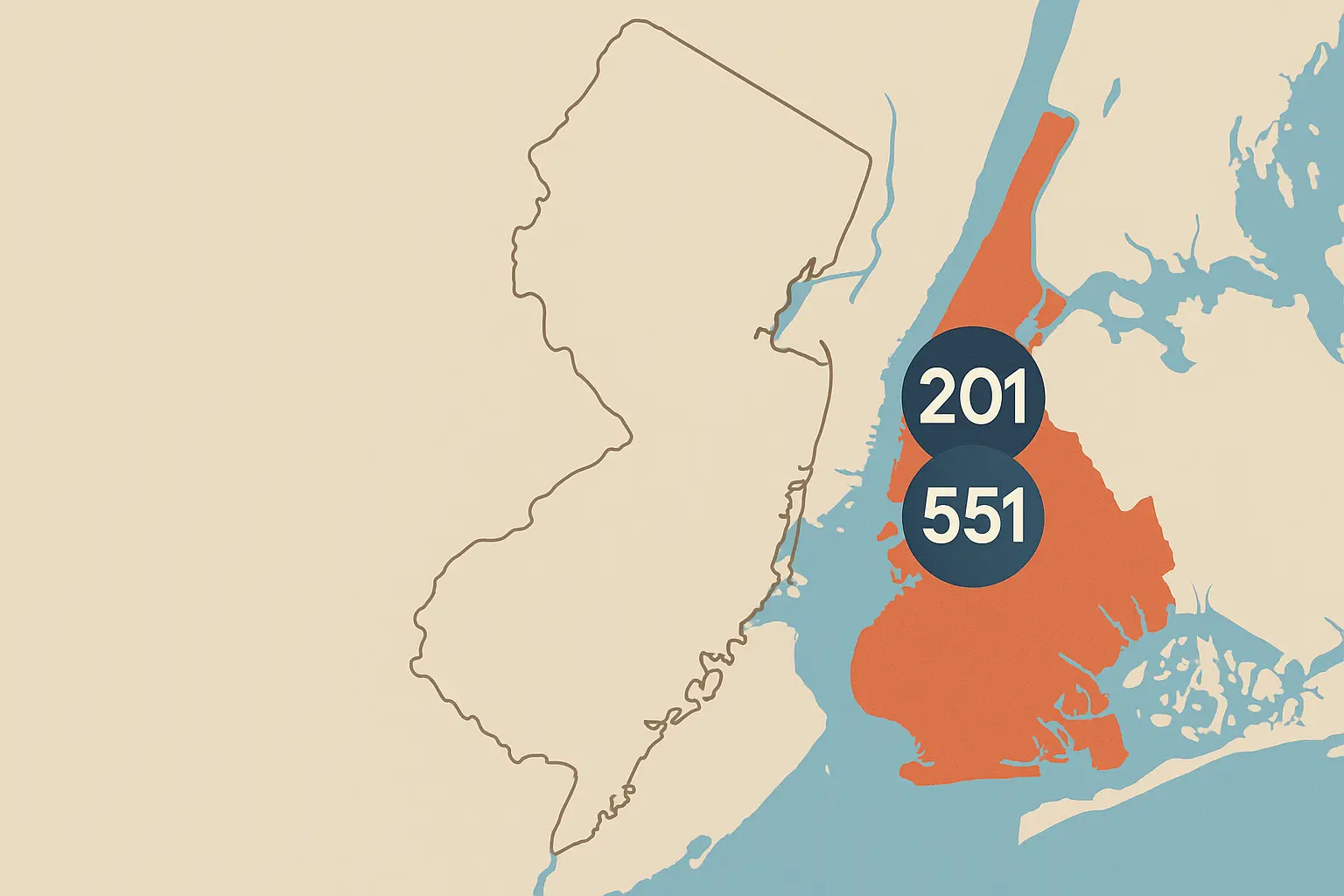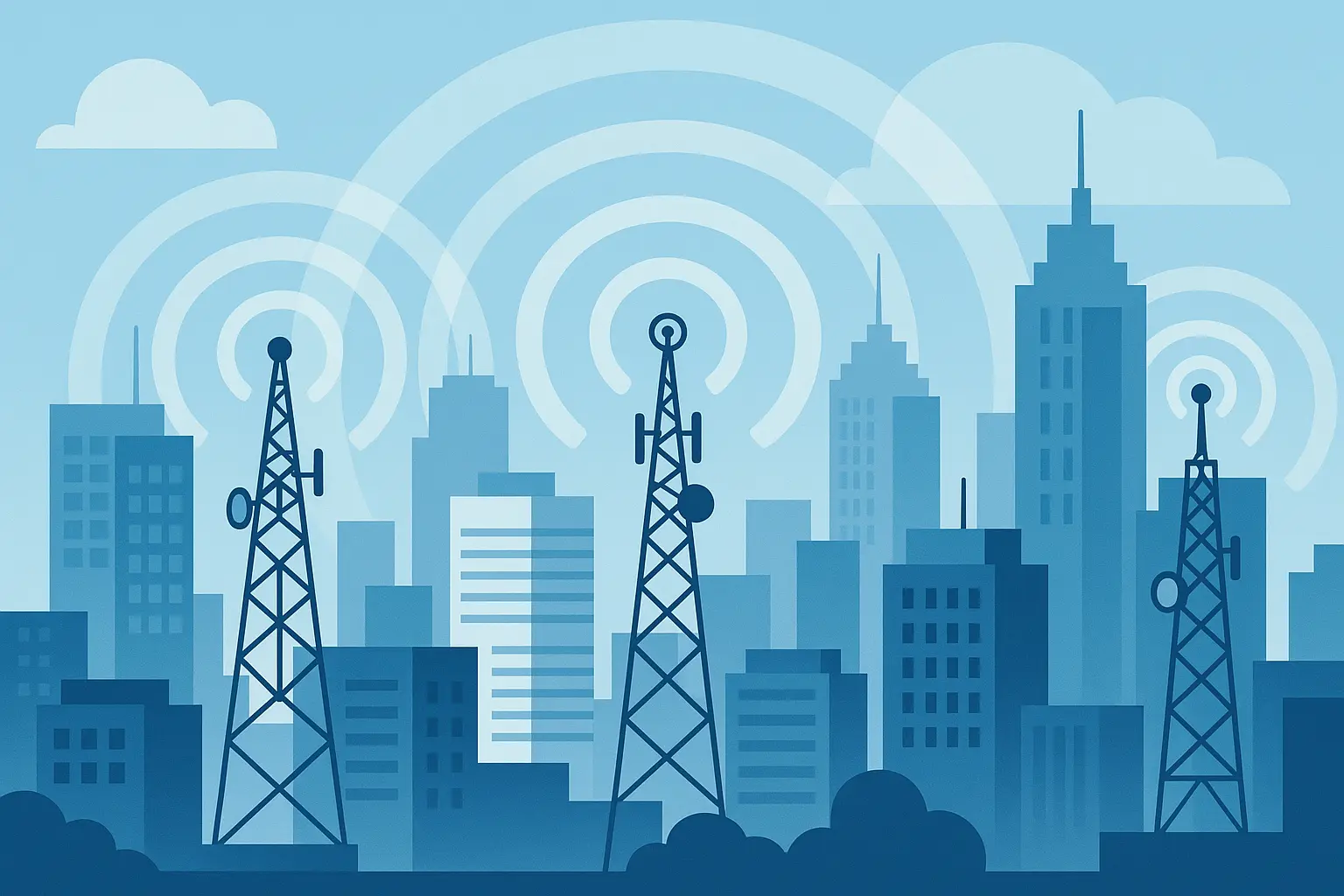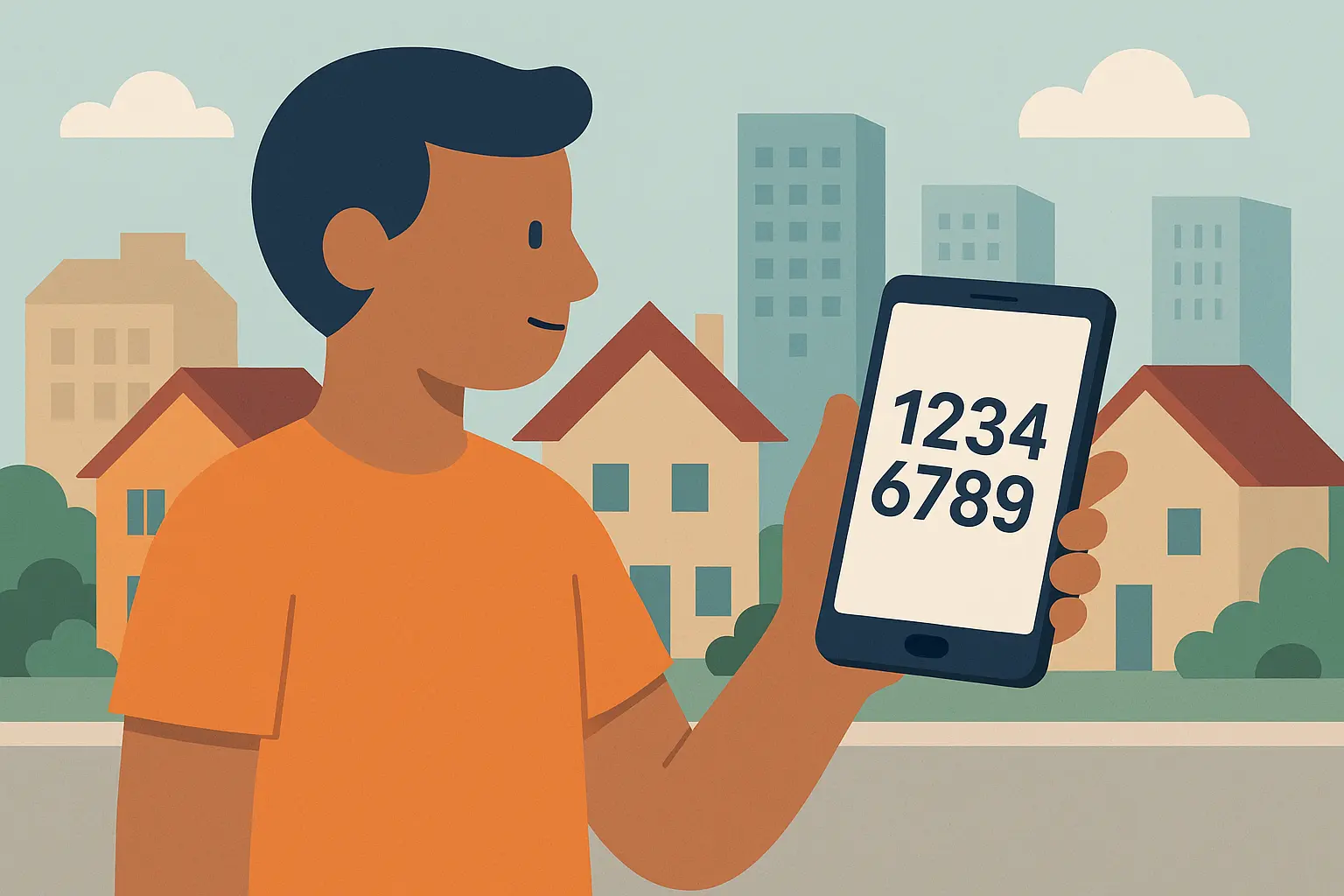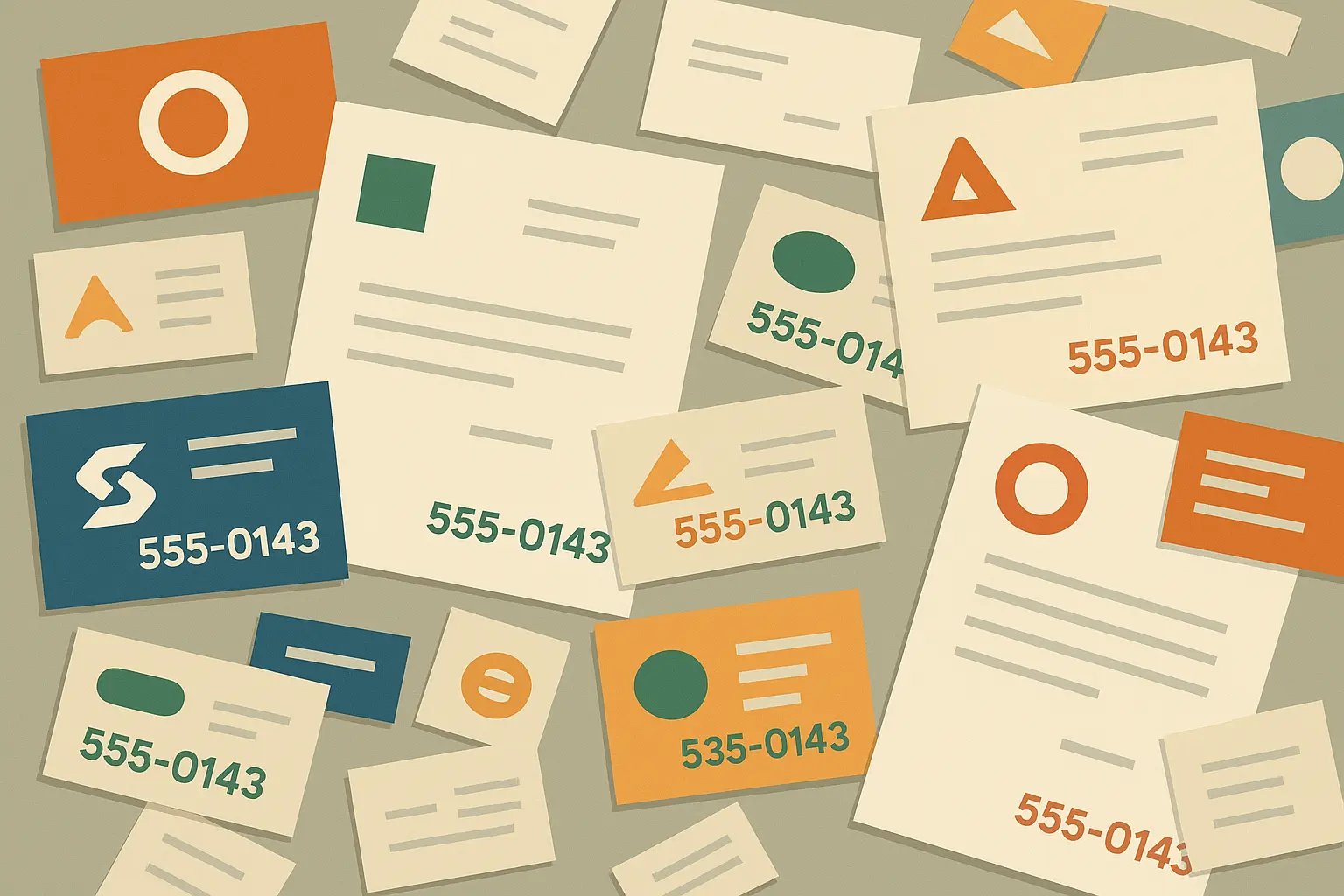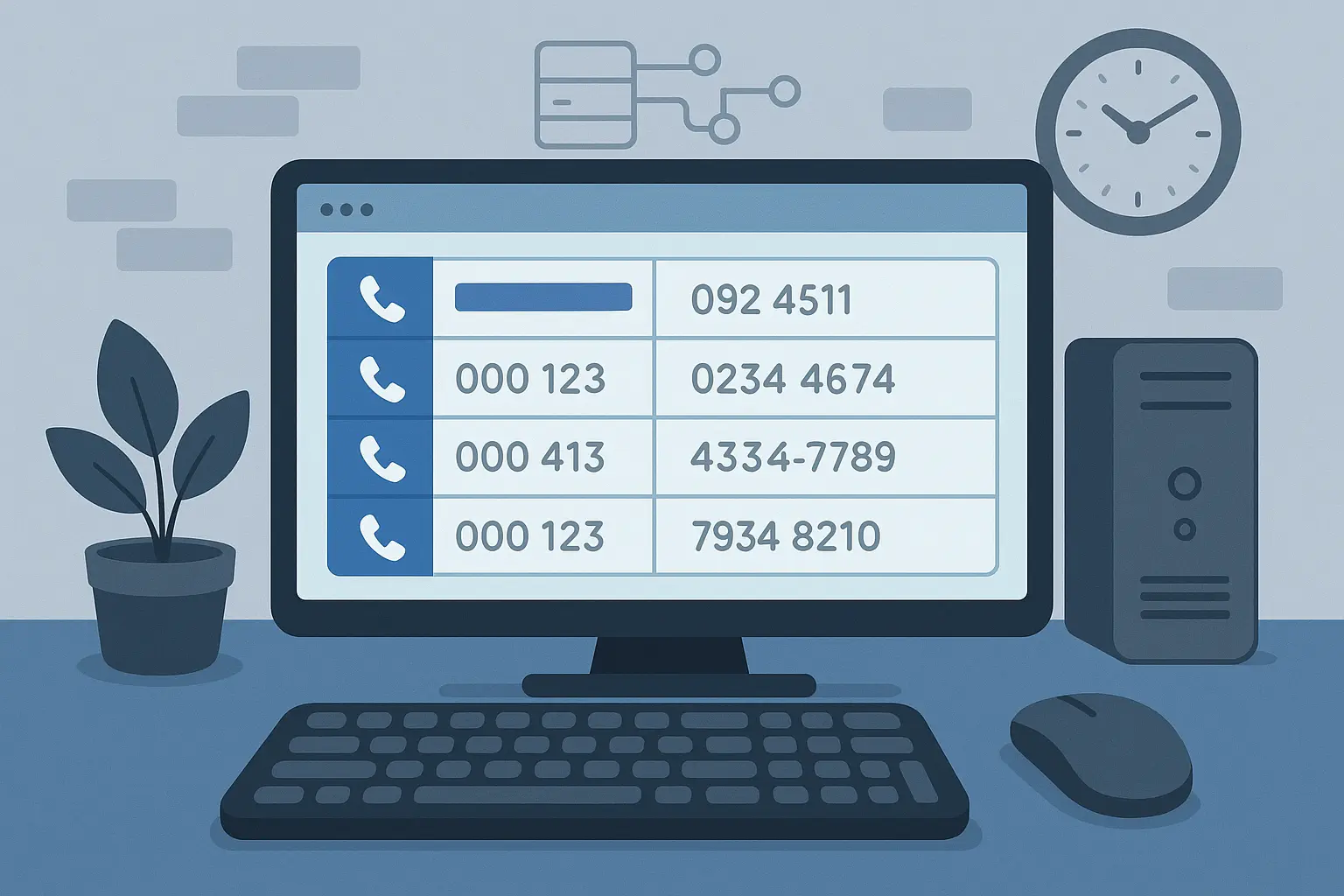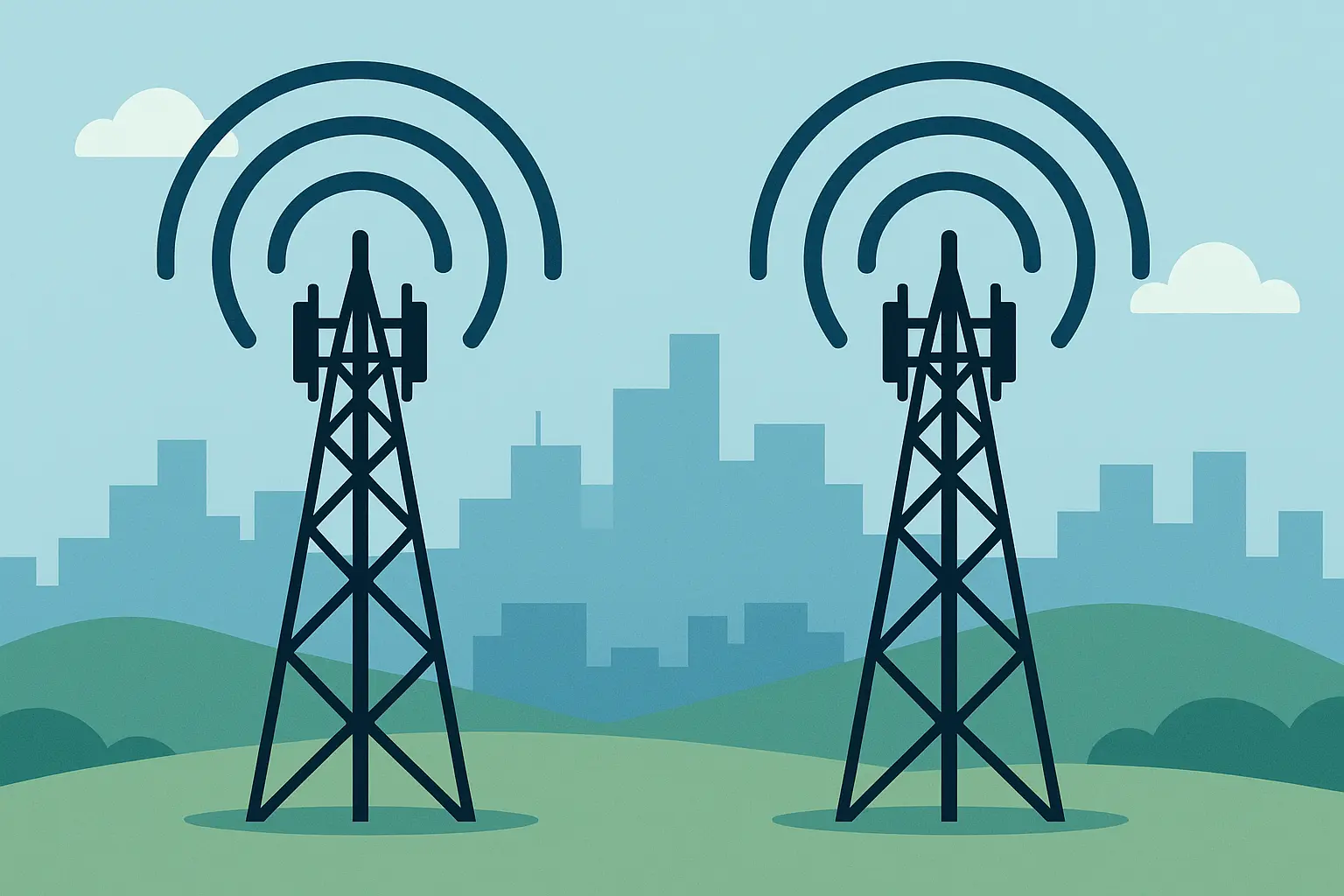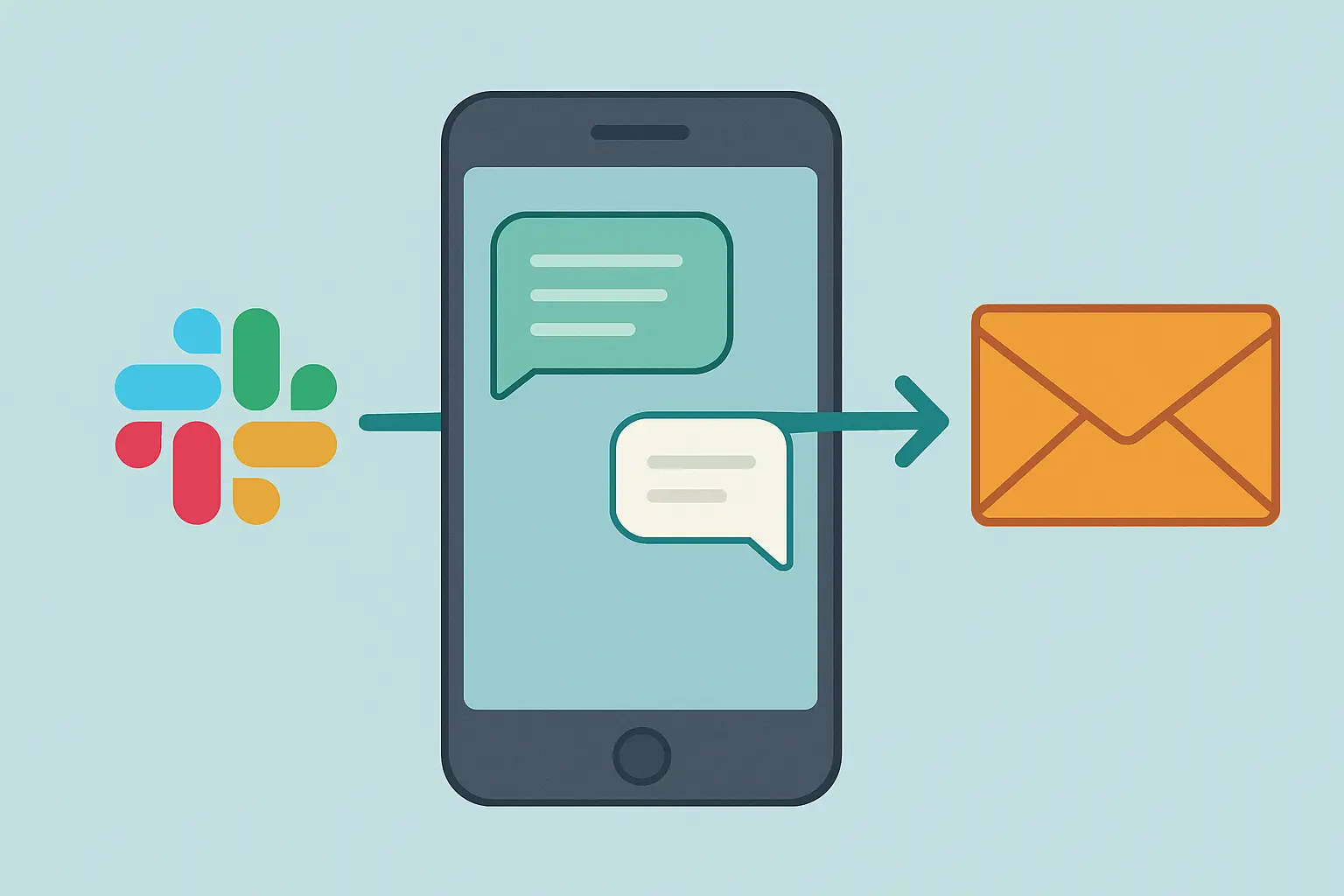If you live in northeastern New Jersey, you’ve probably noticed something weird about phone numbers here. We’ve got two area codes covering the exact same area, and it’s way more confusing than it needs to be. I’ve lived here for years, and let me tell you – this two-area-code thing still trips people up. Here’s what I wish someone had told me when I first moved here.
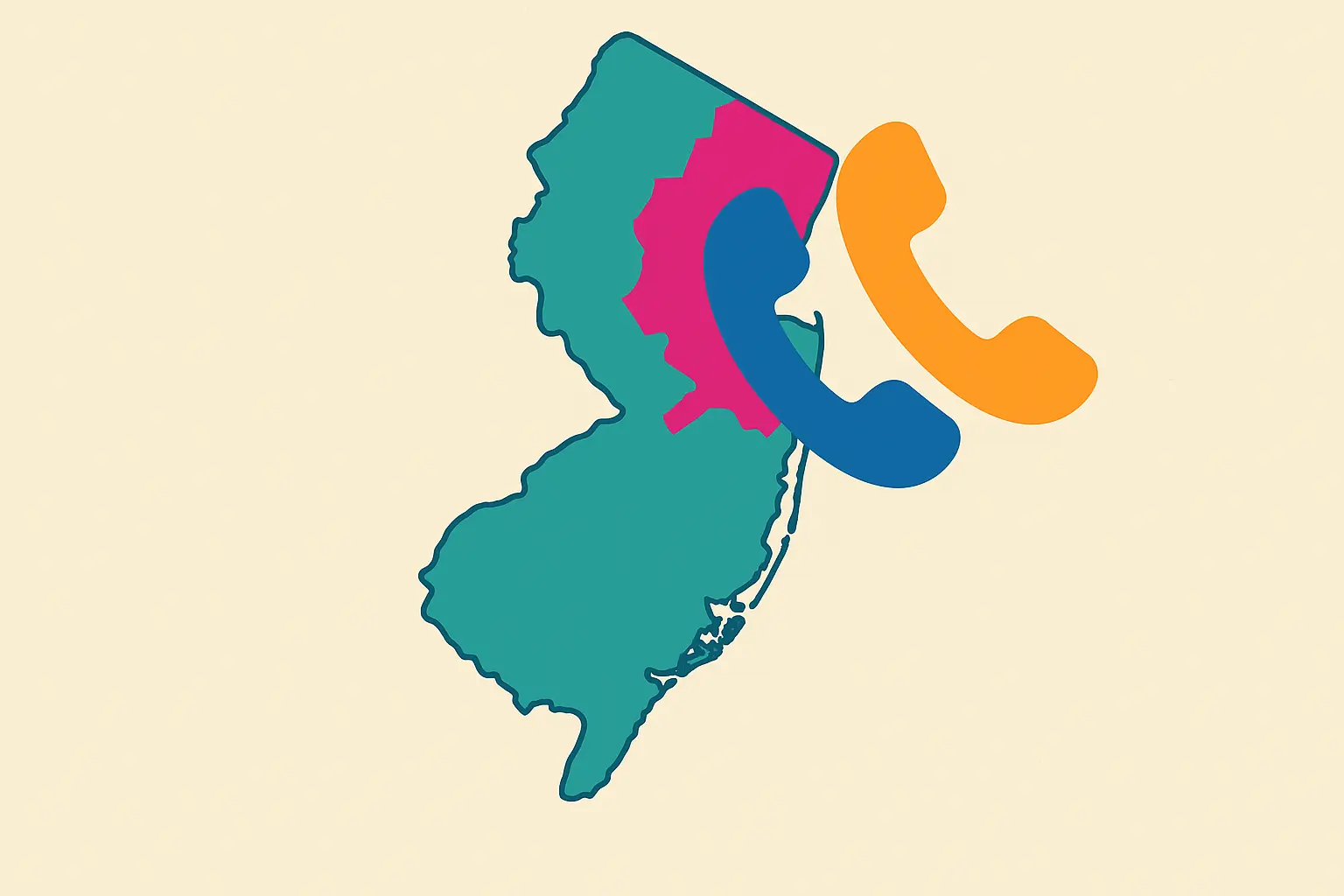
Table of Contents
Table of Contents
-
What’s the Deal with Two Area Codes?
-
Where These Numbers Actually Work
-
Why You Have to Dial All 10 Numbers (Yes, Even for Your Neighbor)
-
How This Messed Up Local Businesses
-
Living with This System in 2024
-
Making Communication Easier with Auto Forward SMS
-
Bottom Line
TL;DR
-
551 and 201 cover the same exact area in North Jersey
-
You have to dial all 10 digits for every call, even local ones
-
Your area code doesn’t matter – they work exactly the same
What’s the Deal with Two Area Codes?
When North Jersey Ran Out of Phone Numbers
Back in 2001, something simple happened: North Jersey ran out of phone numbers. The area was growing so fast that the old 201 area code just couldn’t keep up. So phone companies came up with something called an overlay – basically slapping a new area code (551) right on top of the old one.
According to NJ 101.5, many New Jersey residents were caught off guard by the introduction of 551, with one radio host admitting “I had never seen the 551 area code and didn’t think it belonged to New Jersey” despite the code being active since 2001. This highlights how the overlay system can go unnoticed by residents in other parts of the state.
Picture this: You’re trying to call the pizza place down the street. You dial the seven digits you see on their sign, and… nothing. Dead air. That’s because even calling next door requires the full area code now.
Understanding phone number formats becomes crucial when managing communications across multiple area codes, which is why knowing how to enter a phone number in international format can help businesses maintain consistency in their contact databases.
Why 201 Was Special
Area code 201 was one of the original codes from way back in 1947. It used to cover the entire state of New Jersey – every single phone number started with 201. As the state grew, they carved out other areas like 609 for South Jersey and 973 for other northern areas.
But this time was different. Instead of splitting up the territory geographically, they just added 551 on top of 201’s area. Same towns, same streets, two different area codes.
Too Many People, Not Enough Numbers
Northeastern New Jersey is packed. We’re talking about one of the most densely populated areas in the country. Everyone needed phone numbers – new residents, businesses, cell phones, fax lines. The old system just couldn’t handle it.
How This Overlay Thing Actually Works
Here’s the weird part: 551 and 201 cover exactly the same area. Your neighbor might have a 201 number while you have 551, even though you live on the same block. The area code doesn’t tell you anything about where someone lives.
|
Area Code |
When It Started |
How It Works |
Geographic Area |
|---|---|---|---|
|
201 |
1947 |
Original |
North Jersey |
|
609 |
1958 |
Split from 201 |
South Jersey |
|
973 |
1997 |
Split from 201 |
Other North Jersey |
|
551 |
2001 |
Overlay on 201 |
Same as 201 |
Same Places, Different Numbers
Both codes serve Jersey City, Hoboken, Bayonne, Union City, and parts of Bergen County. Your area code is basically random – it depends on when you got your number and what your phone company had available.
For businesses operating in this region, proper US phone number format becomes essential when dealing with customers across both 201 and 551 territories.
Where These Numbers Actually Work
The Coverage Area
We’re talking about the economic heart of North Jersey here. Jersey City’s financial district, Hoboken’s tech startups, Bayonne’s industrial area – all the places that make this region tick.
The Main Cities and Towns
Here’s what’s covered:
|
Major Cities |
What’s There |
Why It Matters |
|---|---|---|
|
Jersey City |
Financial District |
Major business hub |
|
Hoboken |
Tech Startups |
Growing tech scene |
|
Bayonne |
Industrial |
Manufacturing base |
|
Union City |
Mixed development |
Dense residential |
|
Parts of Bergen County |
Corporate offices |
Business centers |
Why This Area Needed Special Treatment
This corridor is basically where everyone who works in NYC but can’t afford to live there ends up. The combination of businesses, residents, and proximity to Manhattan created crazy demand for phone numbers.
I’ve watched this area explode over the years. New apartment buildings, office complexes, restaurants – everything needed phone numbers, and they needed them fast.
How the Boundaries Work
Here’s what’s confusing: a business on one side of the street might have a 201 number while the place across the street has 551. Both serve the same customers and cover the same area, but everyone has to dial 10 digits no matter what.
Why You Have to Dial All 10 Numbers (Yes, Even for Your Neighbor)
The Annoying Reality
Every single call in this area requires 10 digits. Calling your next-door neighbor? Ten digits. Calling the deli on the corner? Ten digits. Calling your mom who lives three blocks away? You guessed it – ten digits.
What You Need to Update:
-
Every contact in your phone
-
Speed dial numbers on your landline
-
Your security system’s emergency numbers
-
Business phone systems
-
Any auto-dial features
Local Calls That Aren’t Really Local
I still catch myself trying to dial just seven digits sometimes. Old habits die hard, but the phone system just won’t connect without all ten. It’s annoying, but that’s how it works now.
Everyone Had to Update Everything
When this started, everyone had to reprogram their phones, update contact lists, and fix their security systems. Businesses had it worse – they needed to update entire phone systems and train employees on the new rules.
How You Get Assigned a Number
When you get a new phone number, whether you get 201 or 551 is pretty much random. It depends on what your phone company has available and their internal preferences. Most people have no idea how the decision gets made.
NumberBarn’s marketplace offers access to over 46,842,346 phone numbers across multiple carriers and vendors, demonstrating the massive scale of number management required in overlay systems like 201/551.
Why Some People Prefer 201
There’s definitely a psychological thing happening here. People think 201 numbers are more “established” or “prestigious” because they’re older. It’s silly since both work exactly the same, but perception matters.
How This Messed Up Local Businesses
Marketing Nightmares
When 551 launched, businesses got hit with costs nobody saw coming. Suddenly, all their marketing materials were wrong or incomplete.
I know a local restaurant chain that had to throw out thousands of business cards. Real estate agents had to update every “For Sale” sign. Even those pizza magnets on everyone’s fridge became useless overnight.
The 201 Premium
Established businesses with 201 numbers often kept them because customers recognized them. New businesses sometimes paid extra for “premium” 201 numbers. It created this weird hierarchy even though both area codes work identically.
Everything Had to Be Reprinted
Business Update Checklist:
-
Business cards (obviously)
-
Website contact pages
-
Email signatures
-
Phone system programming
-
Google listings
-
Customer service scripts
-
Any printed advertising
Database Disasters
Here’s something most people don’t think about: customer databases. Many businesses stored phone numbers without area codes, assuming everyone was 201. When 551 came along, their systems couldn’t tell the difference between (201) 555-1234 and (551) 555-1234.
Many businesses discovered they needed better solutions for managing text communications, leading them to explore how to forward text messages to an email address to maintain consistent customer service across both area codes.
Real-World Example
A local delivery service I know had major problems. Their old system only stored seven-digit numbers. After the overlay, they couldn’t distinguish between customers with the same seven digits but different area codes. Imagine the confusion when two different customers both had the number 555-1234 – one with 201, one with 551. Orders got mixed up, deliveries went to wrong addresses, and they had to completely rebuild their customer database.
Living with This System in 2024
How It Works Now
More than 20 years later, most people don’t even think about it anymore. You get a number, you use it, everything works fine. The system runs pretty smoothly once you get used to it.
Getting New Numbers Today
New numbers get distributed between 201 and 551 based on what’s available. There’s no geographic split – it’s just whatever your phone company assigns you.
The 551 area code region encompasses a total of 47 ZIP codes according to census data, demonstrating the concentrated geographic coverage that necessitated the overlay solution for this densely populated area.
Similar overlay challenges have emerged in other metropolitan areas, such as the 310 area code business impact in Los Angeles, showing how dense urban regions nationwide face comparable telecommunications pressures.
No Difference in Service
Here’s the important part: both area codes work exactly the same. Same service quality, same coverage, same features. There’s no advantage to having one over the other, despite what some people think.
What Other Cities Learned
The 201/551 overlay became a model for other crowded metropolitan areas facing the same problem. Instead of splitting up communities geographically, they just add a new area code on top.
The Planning Template
Other cities now follow a similar playbook:
-
Figure out the problem: How fast are you running out of numbers?
-
Pick your solution: Geographic split or overlay?
-
Manage the transition: Public education and business support
-
Monitor and adjust: Fix problems as they come up
Making Communication Easier with Auto Forward SMS
Managing multiple phone lines gets a lot easier when you can automatically forward text messages to your email. This is especially helpful for businesses in the Jersey City and Hoboken area, where quick responses matter.
Teams can streamline their workflow by learning how to forward text messages to a Slack channel, ensuring important customer messages reach the right people regardless of which area code they come from.
Since so many people here work in fast-paced environments – especially those commuting to NYC – missing important messages isn’t an option. Auto Forward SMS sends your text messages directly to your email, so you see them immediately no matter what device you’re using.
For businesses that need to keep records of customer communications, having SMS messages automatically forward to designated email addresses makes documentation and customer service much easier.
New users can get started quickly by following the getting started guide for AutoForward SMS to begin managing their communications more effectively.
Ready to simplify your communication management? Try Auto Forward SMS today and see how automated message forwarding can make your daily operations smoother.
Bottom Line
The 551 area code isn’t going anywhere, and honestly, it’s not as big a deal as it seemed when it first showed up. Yes, the two-area-code thing is weird, but once you get used to saving all your contacts with 10 digits, it’s really not a problem.
The system works. It solved the phone number shortage without forcing anyone to change their existing numbers or splitting up communities. New residents get phone service, businesses can expand, and life goes on.
Sure, there was some confusion and extra costs when it started, but that’s behind us now. Whether you’ve got a coveted 201 number or a newer 551 line, your phone works exactly the same way.
And hey, at least you’ve got a good conversation starter at parties – most people from other parts of the country have no idea that two area codes can cover the same exact area. It’s one of those weird North Jersey things that makes living here interesting.
The real lesson here is that sometimes the best solution isn’t the most obvious one. Instead of splitting up established communities, the overlay kept everyone together while solving the technical problem. It might be confusing at first, but it works.
